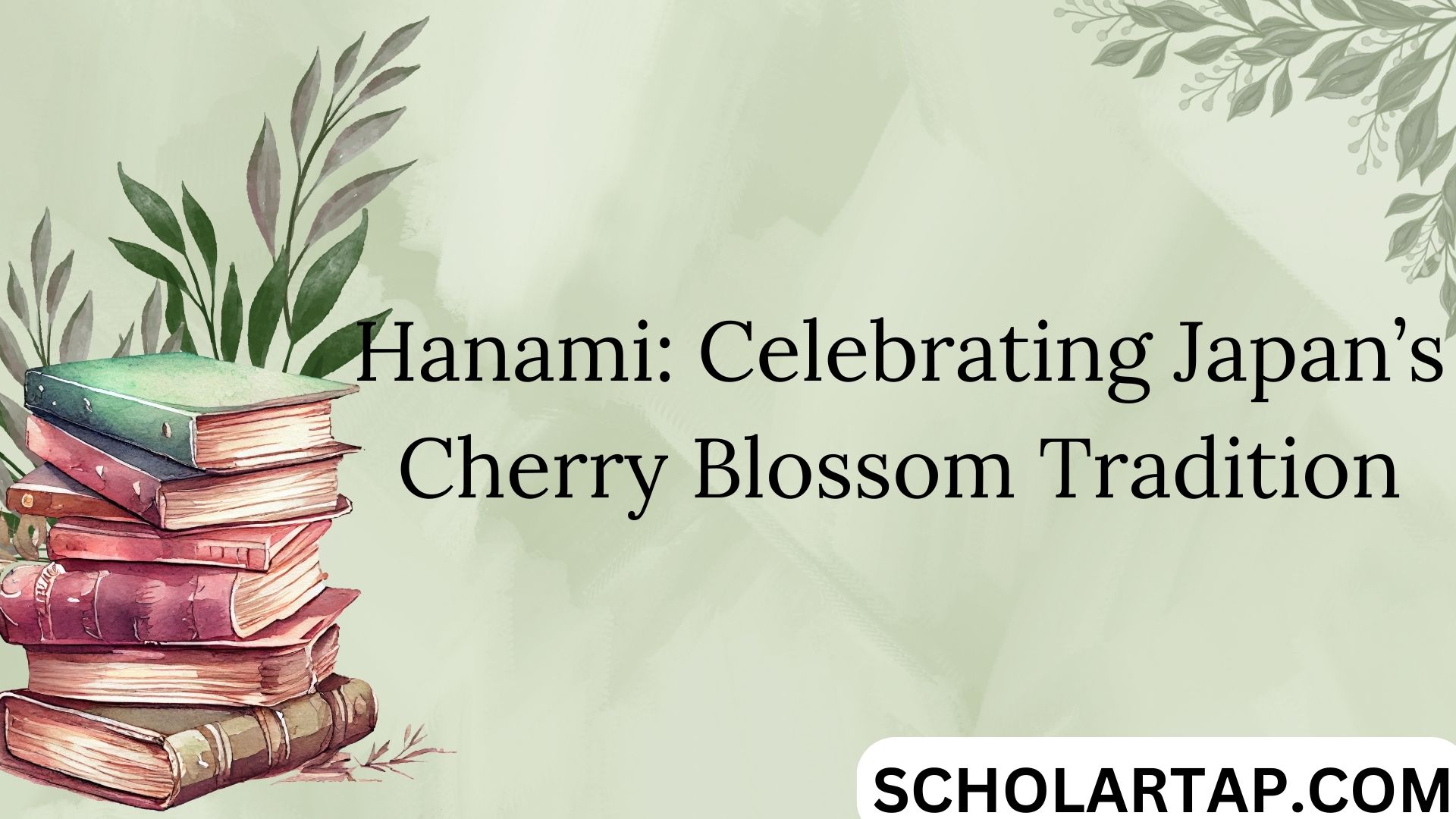
Introduction to Hanami: A Celebration of Beauty and Renewal
Hanami, Japan’s iconic cherry blossom festival, represents the art of appreciating the fleeting beauty of cherry blossoms. Each spring, these delicate pink and white flowers bloom, capturing the hearts of millions. Derived from the Japanese words “hana” (flower) and “mi” (viewing), Hanami is more than an event; it’s a season of rebirth, reflection, and celebration.
1. The History and Cultural Significance of Hanami
1.1 Origin of Hanami:
Hanami dates back to the Nara period (710–794) when plum blossoms were celebrated. By the Heian period (794–1185), cherry blossoms took precedence, especially in the imperial court. Aristocrats composed poetry, drank sake, and enjoyed the blossoms. Sakura trees were viewed as sacred, symbolizing the cycle of life and the transient nature of beauty.
1.2 Symbolism of Cherry Blossoms:
The fleeting nature of cherry blossoms—lasting only about a week—represents the impermanence of life. This aligns with Buddhist principles, deeply ingrained in Japanese culture, which embrace life’s transient nature. Hanami also celebrates renewal, as it coincides with the start of the Japanese school and fiscal year.
2. Modern Hanami Traditions and Festivities
2.1 Hanami Gatherings and Picnics:
Today, families, friends, and coworkers gather beneath cherry trees to eat, drink, and share stories. This celebration, known as “hanami parties,” often includes bento boxes, sakura-themed snacks, sake, and traditional tea.
2.2 The Role of Food and Drink in Hanami:
Sakura mochi, a rice cake wrapped in pickled cherry blossom leaf, symbolizes the season, while Japanese green tea complements the occasion. For those looking to savor a savory twist, yakitori (grilled skewers) and tamagoyaki (Japanese omelet) are often enjoyed as picnic fare.
3. The Best Locations to Experience Hanami in Japan
3.1 Tokyo: Ueno Park and Shinjuku Gyoen
Tokyo is renowned for its accessible Hanami locations, with Ueno Park hosting over 1,000 cherry trees. Shinjuku Gyoen, with over 1,500 trees and varied sakura species, is famous for its breathtaking bloom cycles, attracting locals and tourists alike.
3.2 Kyoto: Maruyama Park and the Philosopher’s Path
In Kyoto, Maruyama Park is celebrated for its large weeping cherry tree, illuminated at night for a magical experience. The Philosopher’s Path offers a serene, reflective walk alongside hundreds of sakura trees.
3.3 Hokkaido: Matsumae Park
For a later bloom season, Hokkaido’s Matsumae Park offers a diverse experience with over 10,000 cherry trees of 250 varieties. Here, visitors can see cherry blossoms as late as May, making it ideal for those who missed earlier blooms.
4. The Best Time for Hanami: Tracking Cherry Blossom Blooms
4.1 Understanding the Cherry Blossom Forecast (Sakura Zensen):
Japan releases an annual cherry blossom forecast (Sakura Zensen) that tracks bloom predictions across regions. Cherry blossoms generally bloom between late March and early April in Tokyo, Osaka, and Kyoto, but this varies across different climates.
4.2 Planning for a Hanami Experience:
To experience peak bloom, plan travel according to regional variations. Bloom timeframes can shift by just a few days, and early planning is crucial, especially with the high demand for accommodation.
5. The Hanami Aesthetic in Japanese Arts and Culture
5.1 Hanami in Japanese Art and Literature:
Artists have painted and sketched sakura scenes for centuries, with ukiyo-e prints capturing the seasonal beauty. Poets from the Heian period to contemporary times use cherry blossoms as symbols of love, longing, and reflection. Haiku poetry, in particular, often captures the ephemeral beauty of sakura.
5.2 Influence on Pop Culture:
From anime to cinema, cherry blossoms represent scenes of romance, nostalgia, and change. Japanese pop songs and dramas often use Hanami as a motif to convey emotional depth, linking viewers and listeners to this cultural celebration.
6. Hanami Beyond Japan: Global Celebrations
6.1 Washington, D.C., and the National Cherry Blossom Festival
In 1912, Japan gifted cherry trees to the United States, establishing the National Cherry Blossom Festival in Washington, D.C. Held annually in late March, this festival includes parades, performances, and a rich blend of Japanese and American culture.
6.2 Other International Cherry Blossom Celebrations
Vancouver, British Columbia, hosts the Vancouver Cherry Blossom Festival, while Bonn, Germany, features cherry blossom-lined streets that draw thousands each year. Taiwan, South Korea, and other countries also celebrate cherry blossom festivals, showcasing Hanami’s global appeal.
7. Environmental Conservation and Hanami
7.1 Preserving Cherry Blossom Trees:
Organizations in Japan work to protect ancient cherry trees, some over 1,000 years old. Environmental conservation efforts ensure the longevity of these iconic trees for future generations. Climate change, however, has impacted blooming cycles, prompting greater awareness and action to protect these beloved trees.
7.2 Sustainable Hanami Practices
Tourists and locals are encouraged to observe eco-friendly practices during Hanami, such as cleaning up after picnics and reducing waste. Many parks provide specific areas for waste disposal, and sustainable efforts help keep the blossoms pristine.
Conclusion: The Eternal Beauty of Hanami
The tradition of Hanami is more than a cultural celebration; it’s a reminder of life’s fleeting moments and the beauty within them. Each petal that falls is a symbol of the natural cycles of growth, change, and rebirth. Whether you’re planning a trip to Japan for Hanami, experiencing it through local festivals, or simply appreciating cherry blossoms in your own way, Hanami offers a powerful, enduring connection to nature and the rhythm of life.
Leave a Reply